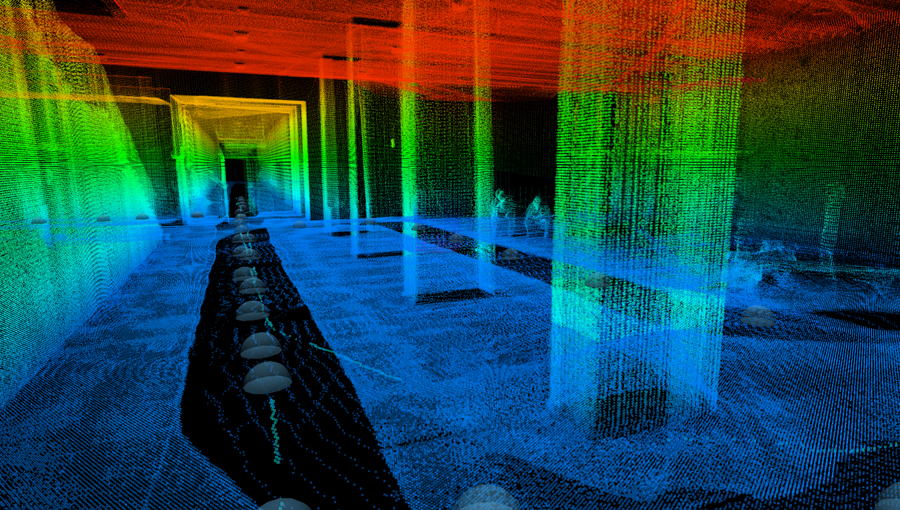If a GPS signal can’t get through, imaging data might be the answer
Improved positioning indoors

The NAVVIS positioning system is primarily based on visual information. The TUM researchers had to develop a special location recognition system for this project. They started by taking photos of a building, simultaneously mapping prominent features like stairs and signs. A smartphone app then lets users view the map images to find their current location. All they have to do is take a photo of their surroundings. The program then compares the photo with the images stored in its database and works out the user’s exact position (down to the nearest meter) and the direction in which they are facing. The app uses arrows to point the way in a 3D view.
NAVVIS is currently being tested at TUM: “With multiple floors and winding corridors, the main campus is something of a maze after several decades of expansion. This makes it an ideal testing ground for NAVVIS,” declares Georg Schroth, who is heading up the project at TUM’s Institute for Media Technology. NAVVIS has other potential uses besides navigation, as his colleague Robert Huitl explains: “The software can also be used for augmented reality applications if you add on special programs. So for instance, visitors to the Louvre would not only be able to locate the Mona Lisa, but also view information about the painting or find directions to other works by da Vinci.” Another possibility would be virtual tours on a PC or smartphone.
NAVVIS is suitable for all places beyond the reach of satellite navigation. Wireless network signals can also be used for approximate positioning. When the application is started, the system loads the available visual data packets. The user takes a photo of their surroundings. The program then compares it with the database images in a fraction of a second and reveals the user’s exact position. There is a snag, however, in that buildings are constantly changing: Signs are sometimes removed and large buildings will have construction work going on from time to time. Georg Schroth explains how NAVVIS stays up to date: “The system doesn’t just position the user, it also utilizes the user’s photos to record changes in the interior and overwrite obsolete data.”
The TUM researchers are using a mapping trolley to map buildings. The trolley includes two laser scanners, single lens reflex cameras and a 360 degree camera. When the trolley passes along a corridor, the two lasers scan the dimensions horizontally and vertically and create a virtual map using three-dimensional point clouds. Software is then used to lay the photos over the pixels. This produces a realistic three-dimensional view.
The German Federal Ministry of Economics and Technology has been funding the NAVVIS project since April 2011. TUM’s researchers will present the NAVVIS data and viewer at the International Conference on Image Processing (ICIP) which is set to take place from September 30 to October 3, 2012 in Orlando, Florida.
For more information, a selection of images and a virtual tour of TUM, see
www.navvis.de
Contact:
Georg Schroth
Institute for Media Technology (Prof. Dr. Eckehard Steinbach)
Technische Universität München
Tel.: +49 (0)89 289-29012
E-mail: schroth@tum.de
http://www.lmt.ei.tum.de/